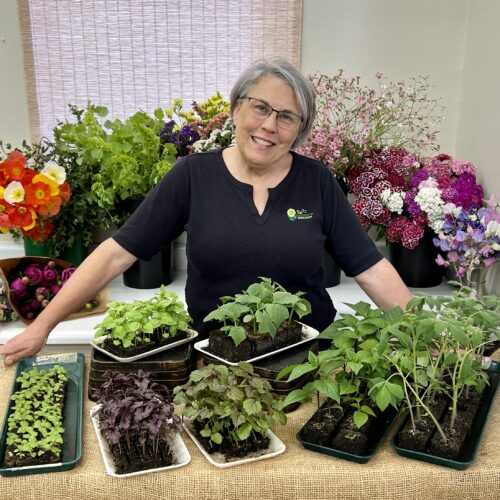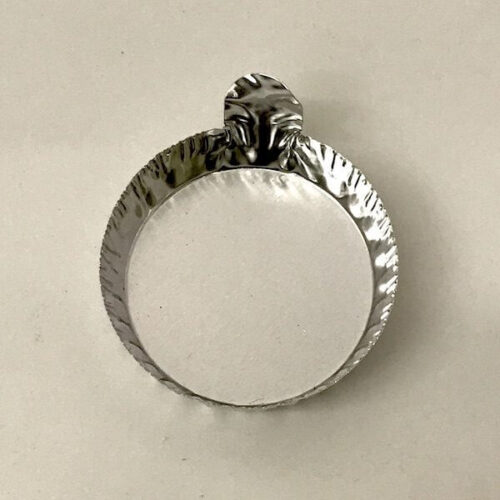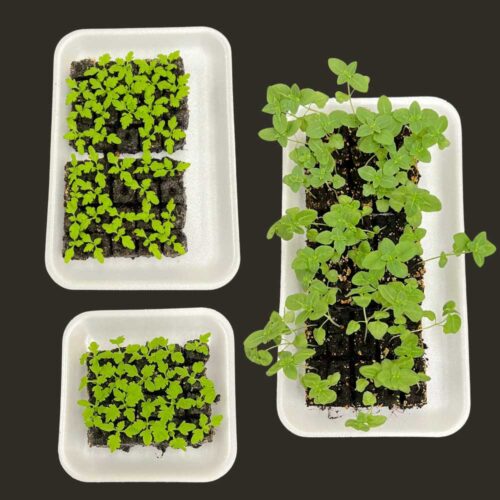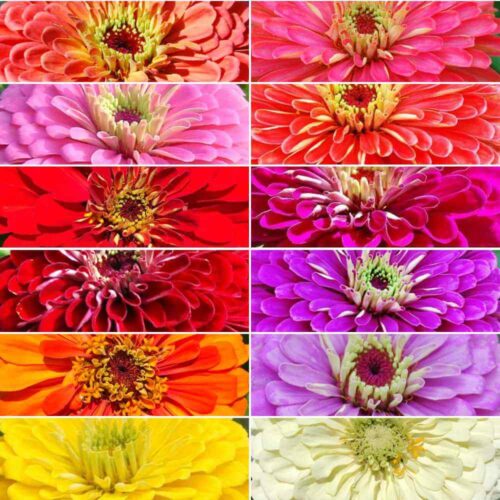Zinnia Talk
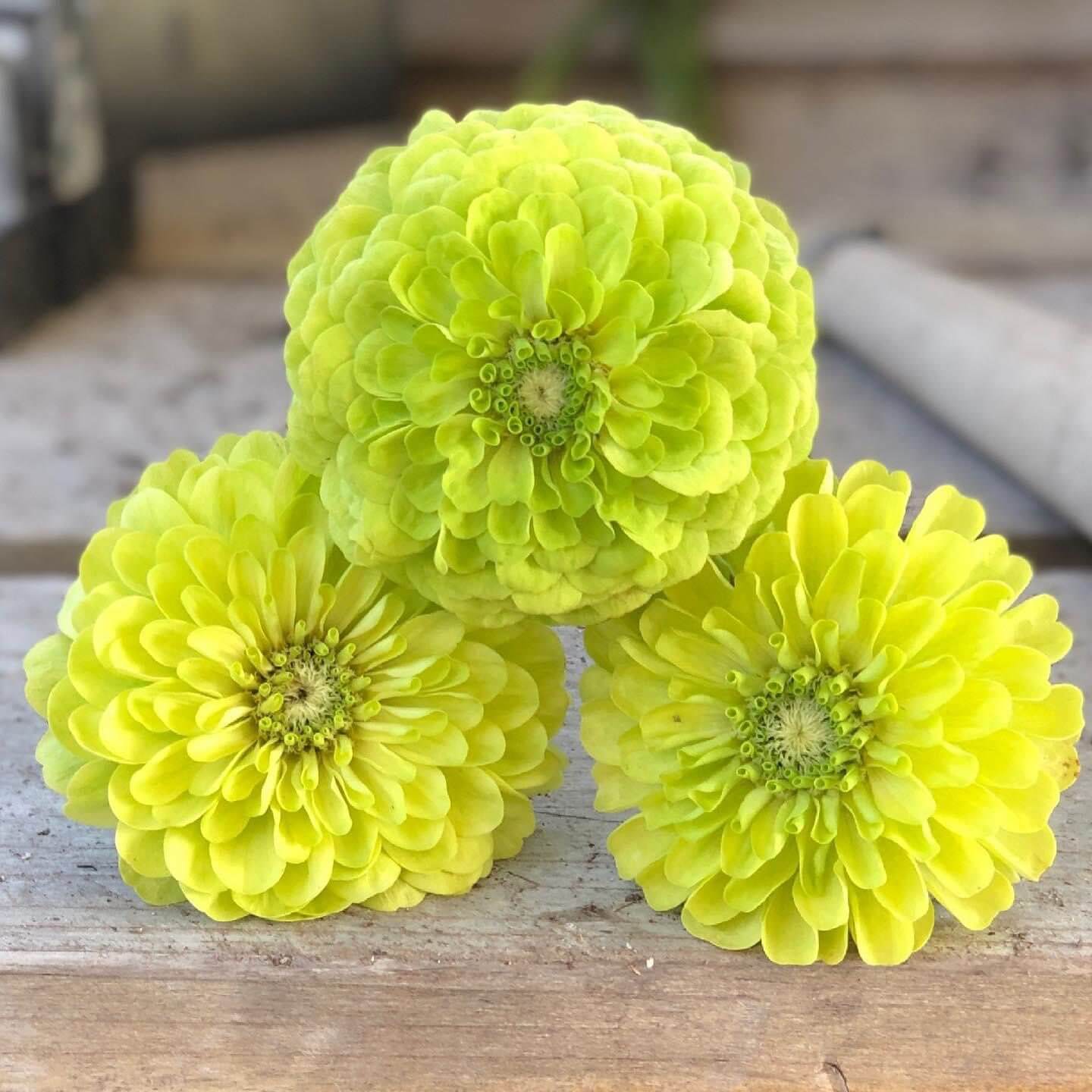
This is a series of social media post I did over a period of a week on zinnias. I hope you enjoy them as much as our friends over there did.
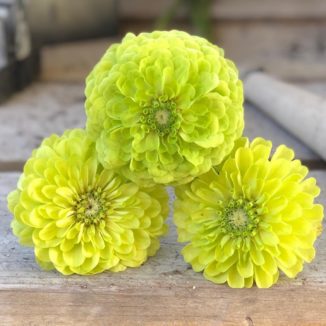
Anybody else tapping their toe wanting flowers? Add in my obsession with green and I’m getting restless!
I’m remembering this morning when green flowers showed up on my flower farming radar. I was unimpressed and thought, are they even really flowers? It took me a couple of years to warmup to them—now they are amongst my favorites. They are so useful!
Back then, Benary’s Lime Green Zinnias (pictured) wasn’t available yet and the ones I grew left a lot to be desired.
Then our favorite seed producer Benary’s worked on it and these pictured are the results.
Benary’s zinnias, available in 13 colors, are our go to zinnia. They are the most prolific, disease resistant, and produces the most double blooms.
Many think they are such a simple and easy to grow flower, why would anyone buy them? I can share that after flower farming for 23 years, they remain in our top 10 sellers and profitable flowers that we sell.
I’m feeling like this maybe feature zinnias week! I’ll share how we start, plant, grow, and harvest them this week.
Visit my website to purchase seed— we currently have them all in stock. If you love zinnias, you will love our ZINNIA CATEGORY!
————————————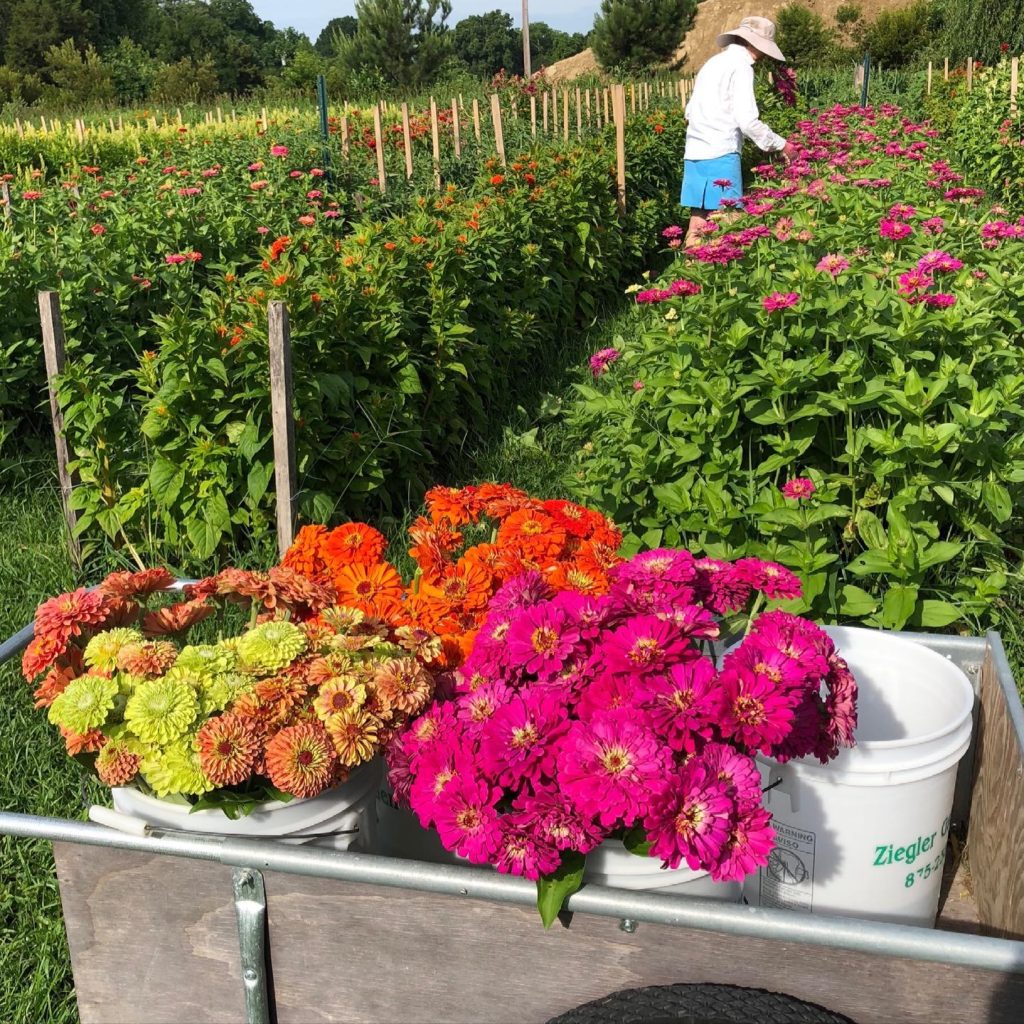
You can see from our harvest buckets that we do also grow a few other zinnia varieties. Pictured are Queen Lime Mix and Uproar along with our standard Benary’s Giant Orange.
While the lion’s share of the zinnia garden is definitely Benary’s, we squeeze in a few others that are also customer favorites.
I have learned that starting our zinnias in the 3/4” soil block indoors to be planted outdoors in the garden at 2-3 weeks old into WARM soil gets them blooming as early as possible and off to the most disease free life.
Zinnias love warm. Planting into cool soil shocks them kinda like jumping into a swimming pool on your last expected frost date. Not a pleasant experience, kinda of a polar plunge. It takes days and days of warm temperatures to heat the soil. Once NIGHTTIME temperatures stay above 65 degrees and holding, it’s time to plant transplants. Planting seed in the garden? Plant two weeks later—that soil really needs to be warm to induce strong sprouting.
I often hear how easy zinnias are to grow and I completely agree—-BUT if you want to grow too quality honking zinnias? Give them what they really want, warmth from the day they are born!
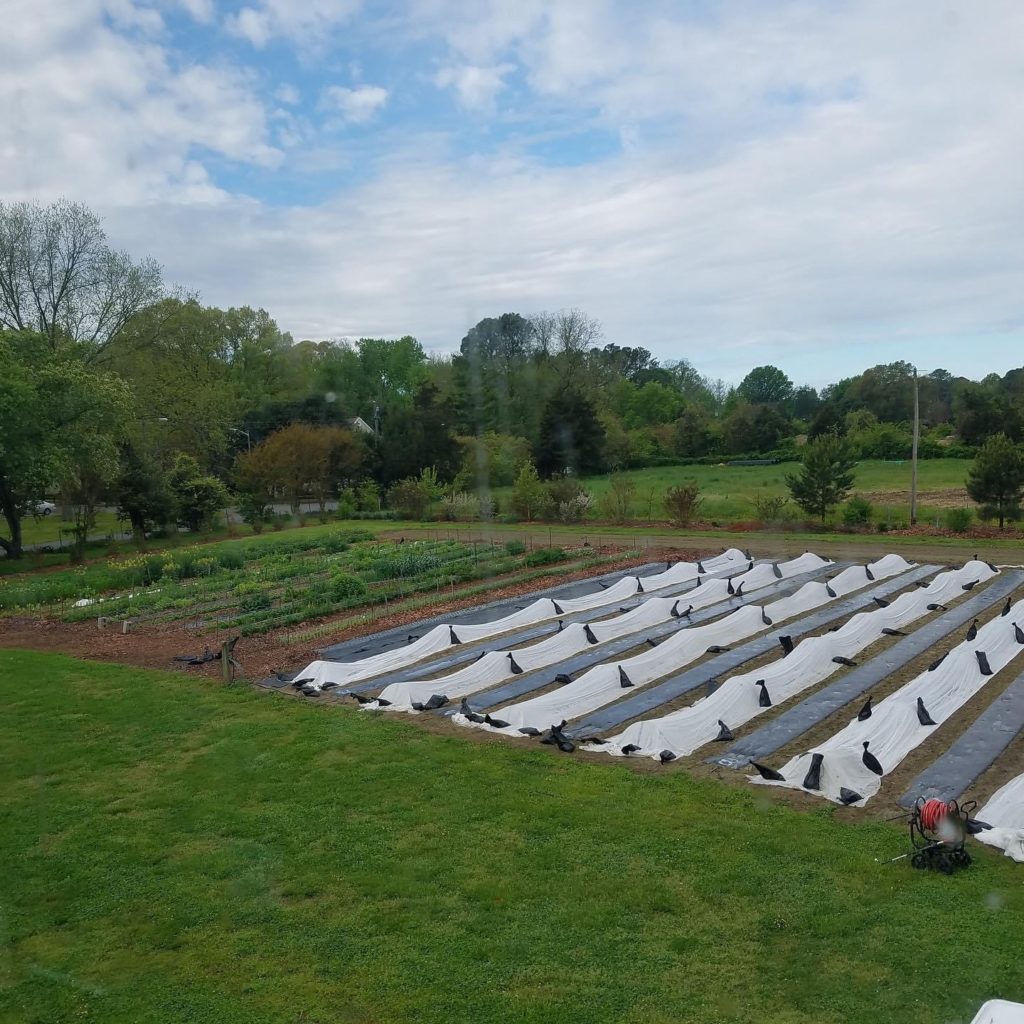
There are ways to squeak them in earlier…which is what we do. We use Bio360 biodegradable film with the black side up to cover our bed tops and try to make beds a few weeks before that last expected frost to help warm the soil. We plant the transplants at that last frost date (about 2-3 earlier than regular planting time) and hoop and cover them with lightweight row cover.
This creates an amazing dreamland under the covers for the transplants. The black film warms the soil a tad faster, the row cover blocks the wind and concentrates the warm sun. All this keeps the transplants happy, warm, and on their way to producing blooms 2-3 weeks earlier.
Find zinnia seeds, Bio360 biodegradable film, hoops, and row covers in stock on my website.
——————————-
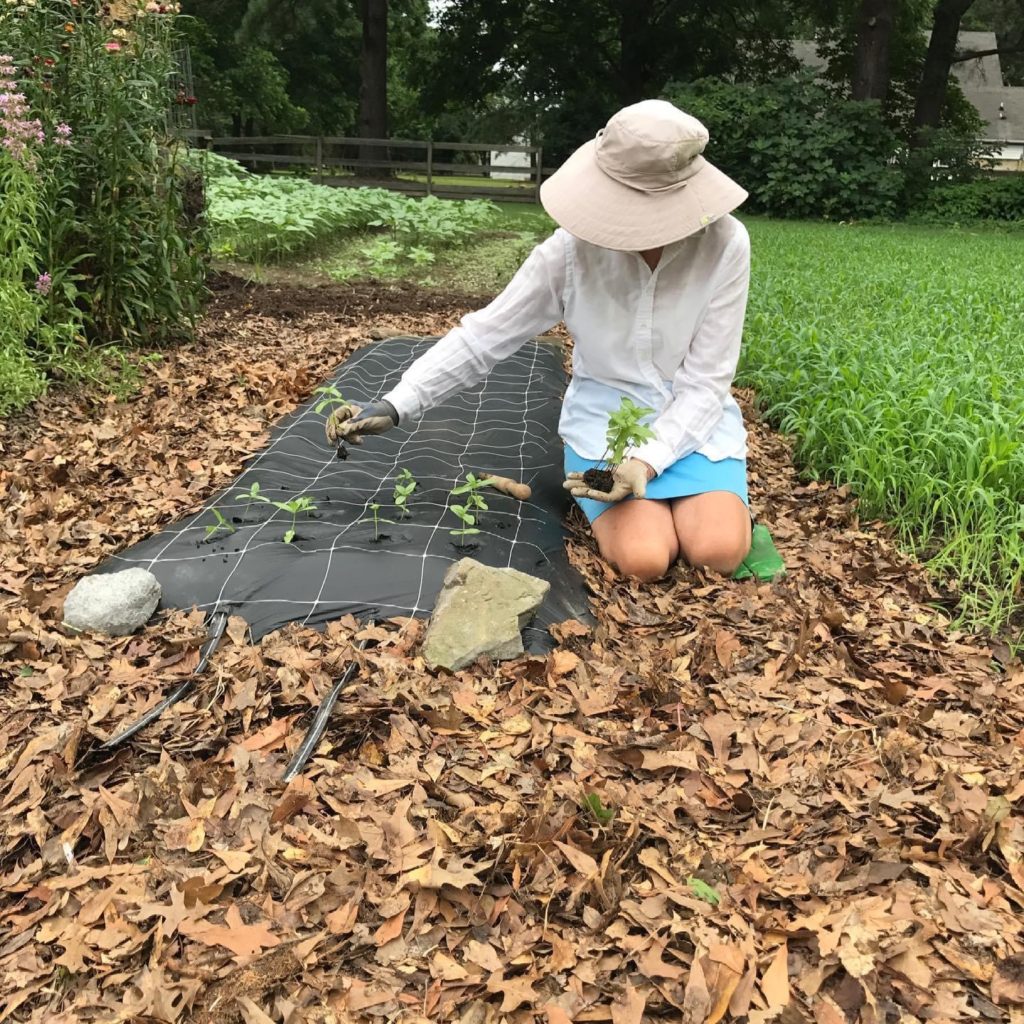
This shot is from my book Vegetables ❤️ Flowers of Bobo planting a home cutting garden bed of zinnias.
The 3’ x 10’ bed is covered with Bio360 biodegradable mulch film with irrigation under it. This setup will warm the soil, encourage root growth, will help to prevent weed seeds from sprouting and disease spores from splashing from the soil up onto the foliage.
We use the black and grey biodegradable film for one planting. At the end of the season either pull the plants and lay 2” of compost on top of the 100% biodegradable film to lay a new piece and plant again or after pulling the irrigation can be turned into the soil to start over.
We use flower support netting for spacing of the transplants. The beds are 30” with 4 rows of plants, 6” apart in row. The film is super easy to pop a hole for planting. You could use your finger but a screwdriver, dibble, or a dandelion weeded work well. The smaller the planting hole, the less light that gets to the bed top to germinate weed seeds. Smaller is better, 2” is perfect.
The flower support netting will change roles and be installed on the bed with stakes to keep the flowers straight and prevent laying down in rain and wind anytime before plants are 24”. Never leave loose netting laying on a bed, dangerous for people and animals to get tangled.
Flower support netting is reusable year after year with proper care. Remove the netting immediately following the last harvest at season end BEFORE the bed gets overgrown. Netting is easily removed at this stage if the bed has been maintained as a cutting garden. We roll it up and hold it closed with a piece of masking tape with the length written on it. Store out of sunlight.
If following the no-till or turn method, after using the Bio360 for a couple of seasons to get a handle on eliminating surface weed seeds you can skip the film. Helped me get a grip so much!
Available and in stock: Bio360 in 50’ and flower support netting in 20’, 50’, and 328’ .
————————-
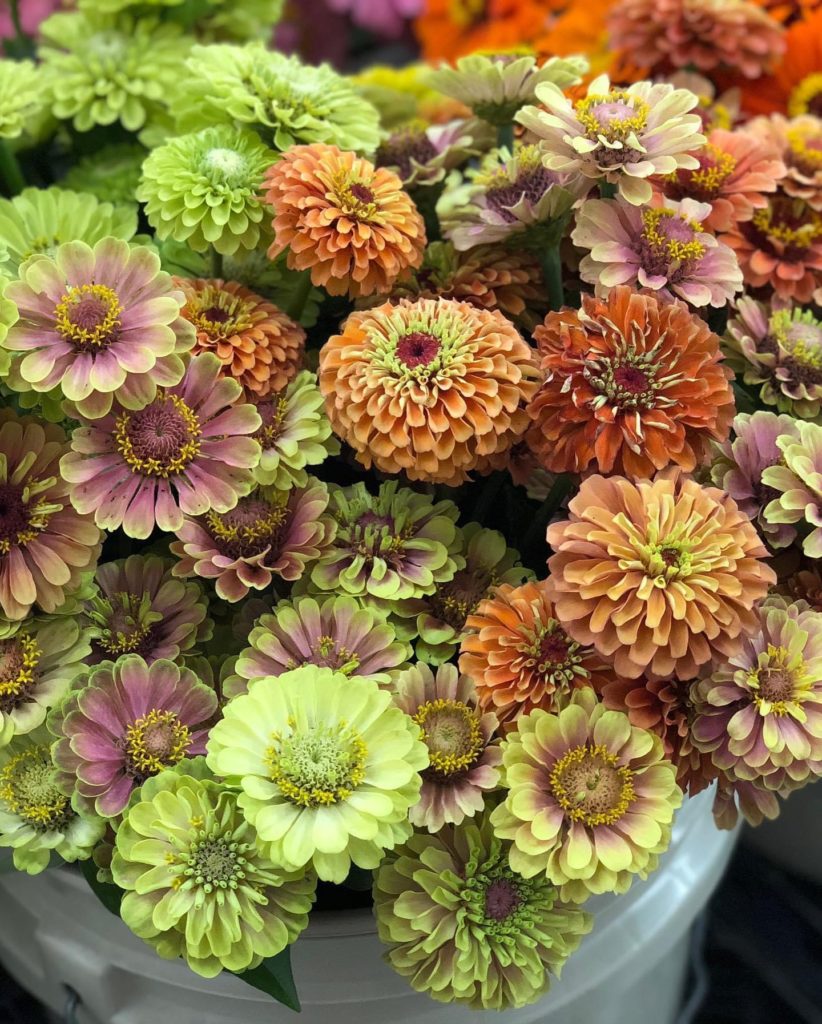
It’s no wonder that zinnias have captured so many hearts. They are such showboats that it’s hard to not fall headfirst for them.
I couldn’t even select just one image! Swipe to see more.
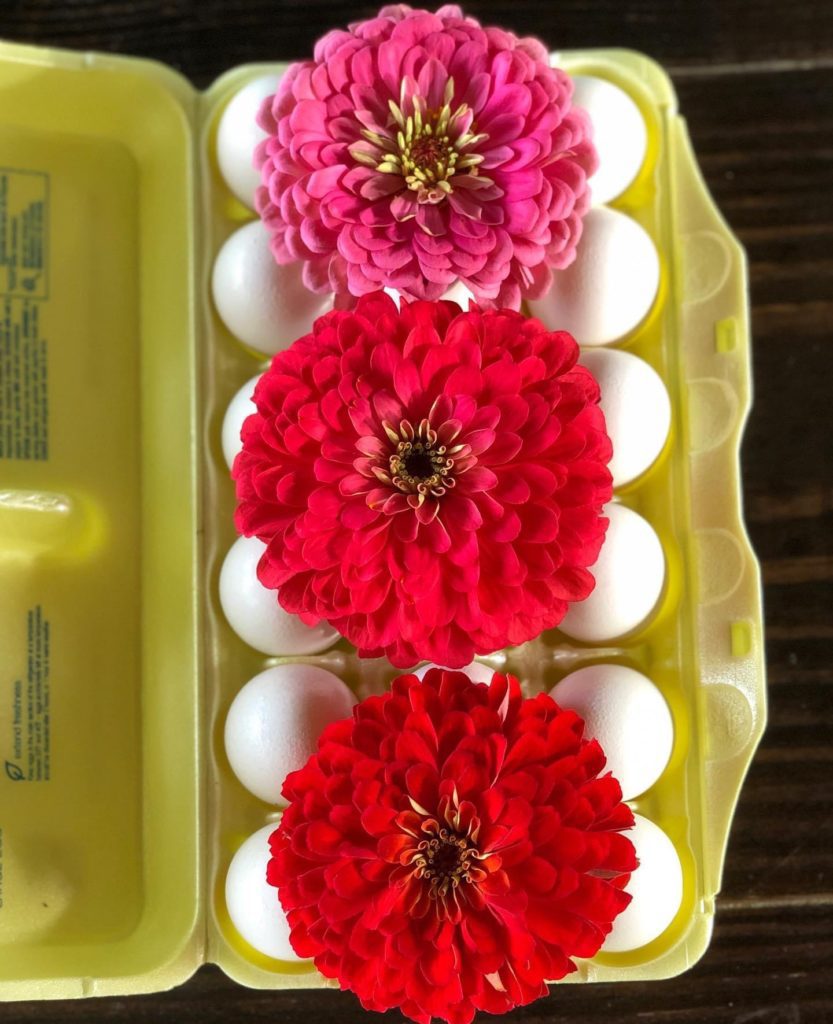
I’ve found that part of having spectacular blemish-free blooms is the timing of when you harvest the stem.
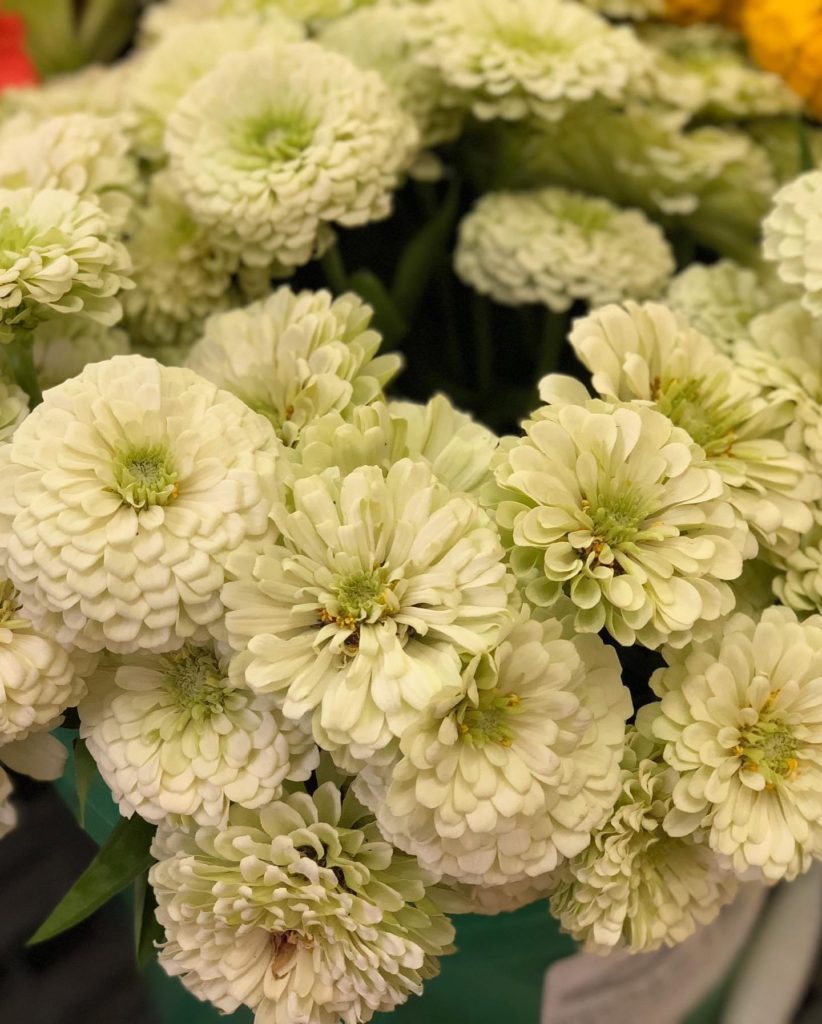
I personally prefer to cut the blooms as soon as their stem is mature enough to not droop after cutting. This stage can vary from garden to garden and from the quality of the stem from one to another.
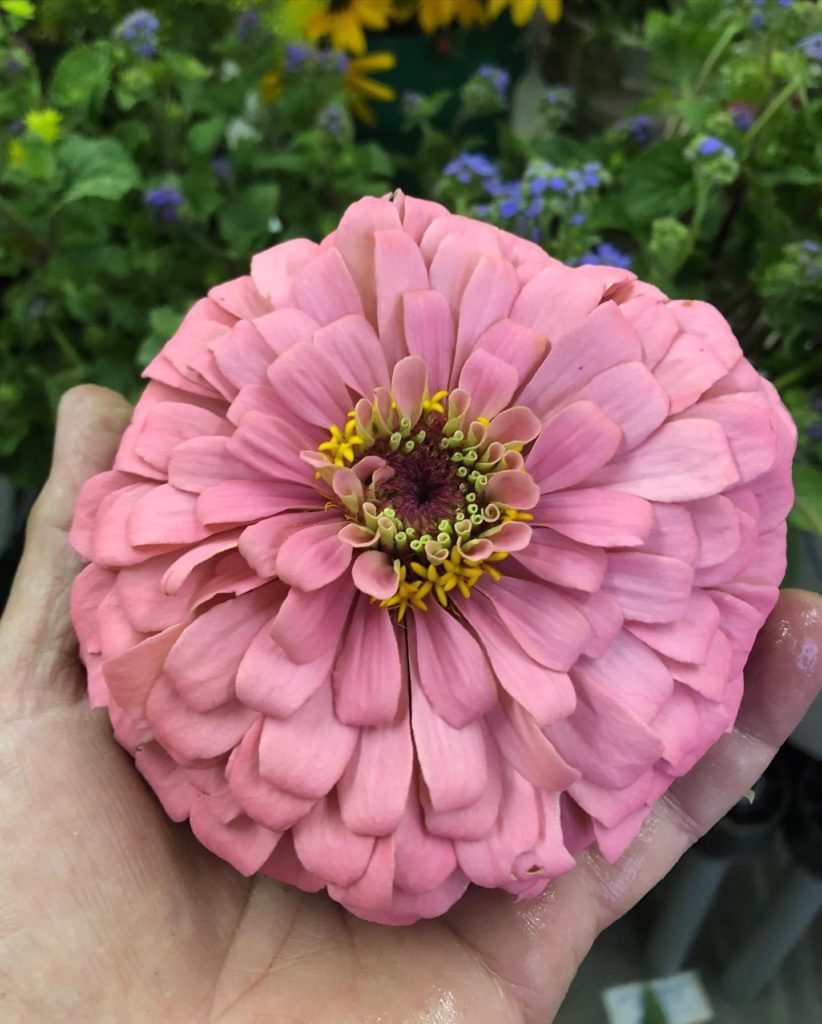
Did you know that zinnias are a member of that notorious group of flowers known as the “DIRTY DOZEN”? They and a few others (sunflowers, dahlias, marigolds, daffodils, and others) pollute vase water more than other flowers and are in fact overly sensitive to pollution—-so they kind of cause their own demise…
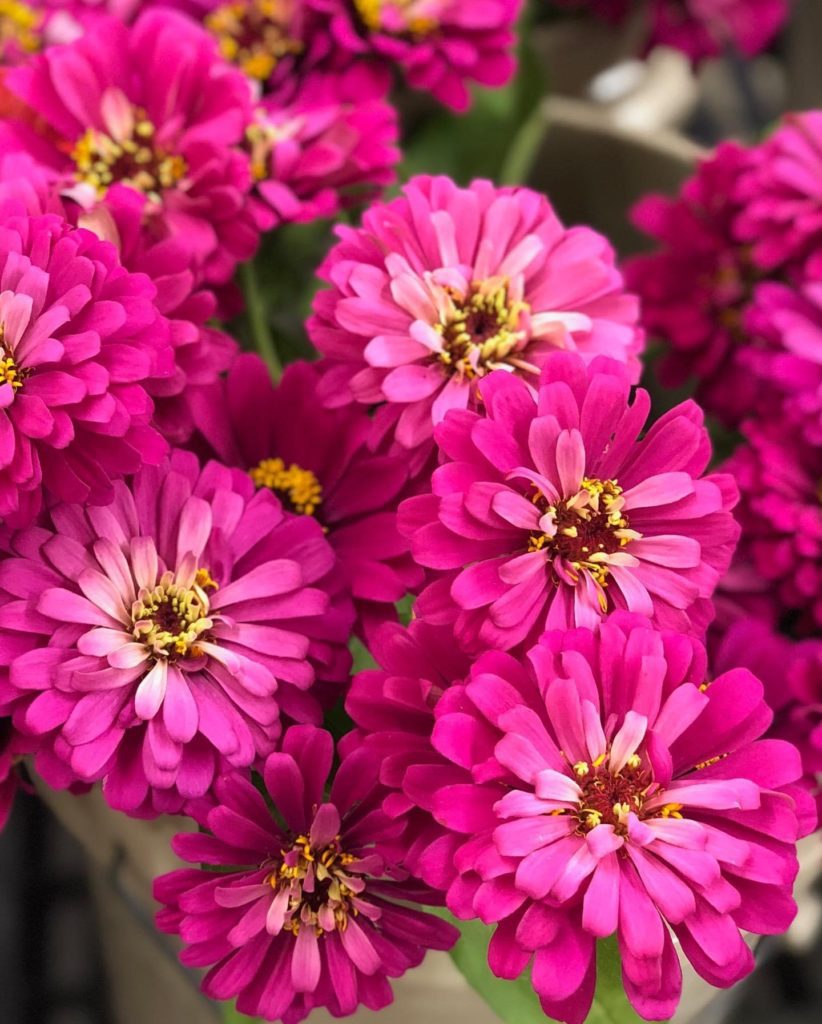
All that yuckiness that oozes out of their stems after cutting feeds the bad stuff in water to fester up and grow even more bad stuff to cut the vase life of the stems.
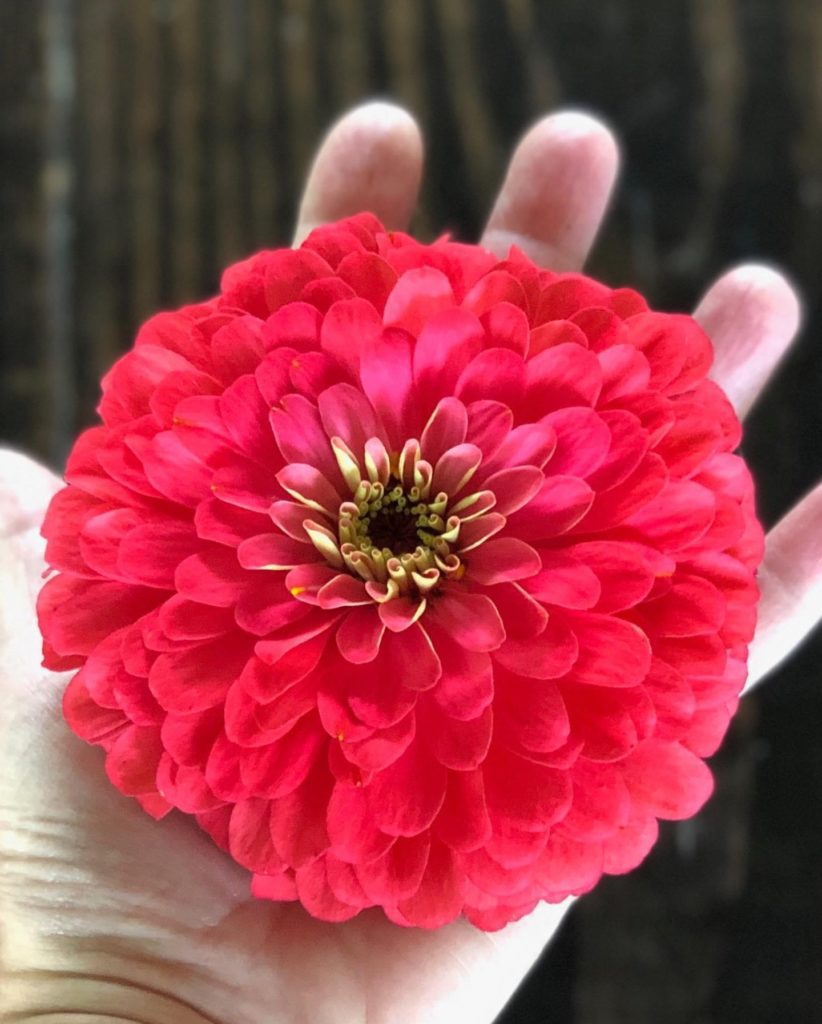
We give our flowers a little hand to combat this whole process. We add a CVBN tablet to every harvest bucket so the first drink each stem gets is clean fresh bacteria-free water. The stems sit in that treated water for at least 4 hours and up to 72 hours for the maximum benefit. When the stems move onto the vase we use flower food to continue fighting bacteria and to feed the foliage and blooms for maximum life.
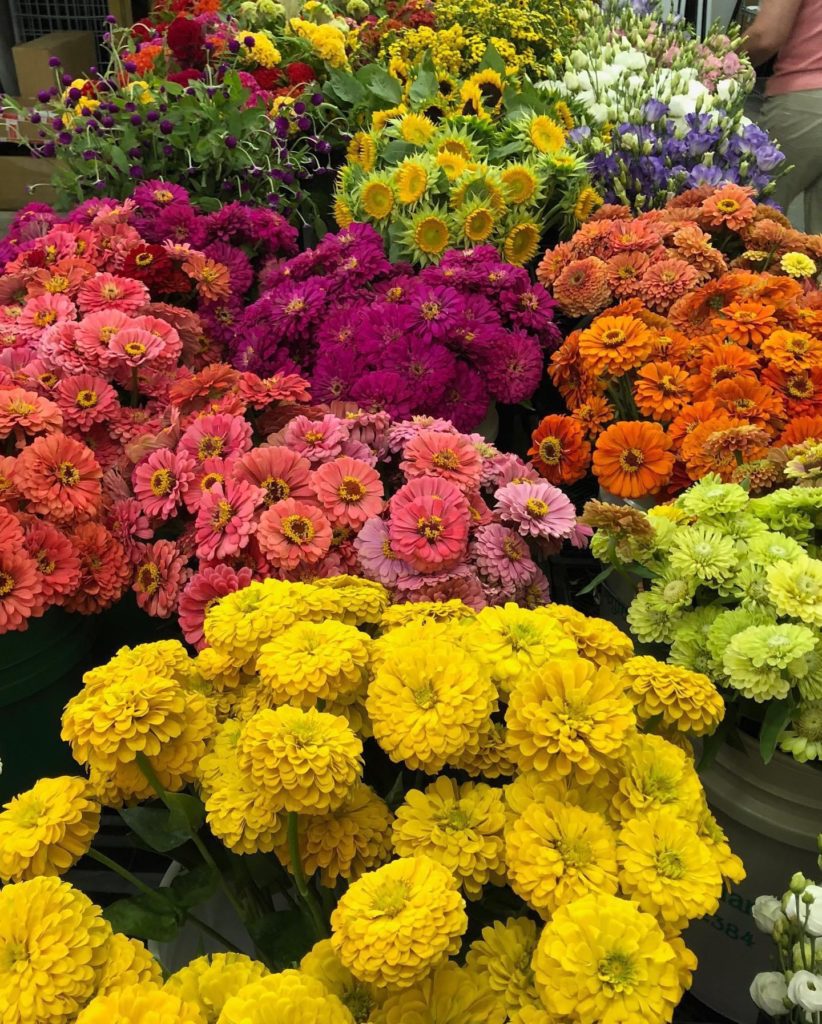
Find the CVBN tabs in stock on my website. Now available in larger volume with a savings. Request my article “Making The Most of Cut Flowers” on the product page and learn more about the process we follow to help flowers last as long as possible in the vase.
———————————

Zinnia seeds and cut flower stems are amongst our top sellers. It took me a lot of years to recognize how simple it can be to sell when you provide what customers want to buy.
I use to chase after every new flower coming down the pike to have something others weren’t offering. To have something new, brighter, better (the proverbial shiny object) but little did I know that the whole time I already had the secret sauce — to grow gorgeous, healthy, long lasting zinnias and then all the other stuff along side will sell too.
Start the seed at the right time, plant the transplants when they are young into WARM soil and then harvest them hard twice a week, condition the stems for long life and your zinnias will knock your customers socks off. ( yours too).
Zinnias are a doorway to people that may not have given flowers a second thought for years —until they see the flowers from their childhood. The bright colors and nostalgic memories have customers wanting them week after week which is the key to building a sustainable business.
We are restocking daily. Find all the supplies including Bio360 film, flower support netting, CVBN tabs, flower food, flower caddy, and all of the gorgeous zinnias seeds and more over on my website.
—————————

We do grow a few other zinnias that are pretty spectacular. While the Benary’s Giants are the meat and potatoes of our production, those pictured play a key role for our customers —so in keeping with my business mojo: give em what they want!
????????Queen Zinnias are just gorgeous. They are smaller blooms in general but their colors makeup for that. We have customers that will take them as long as we have them.
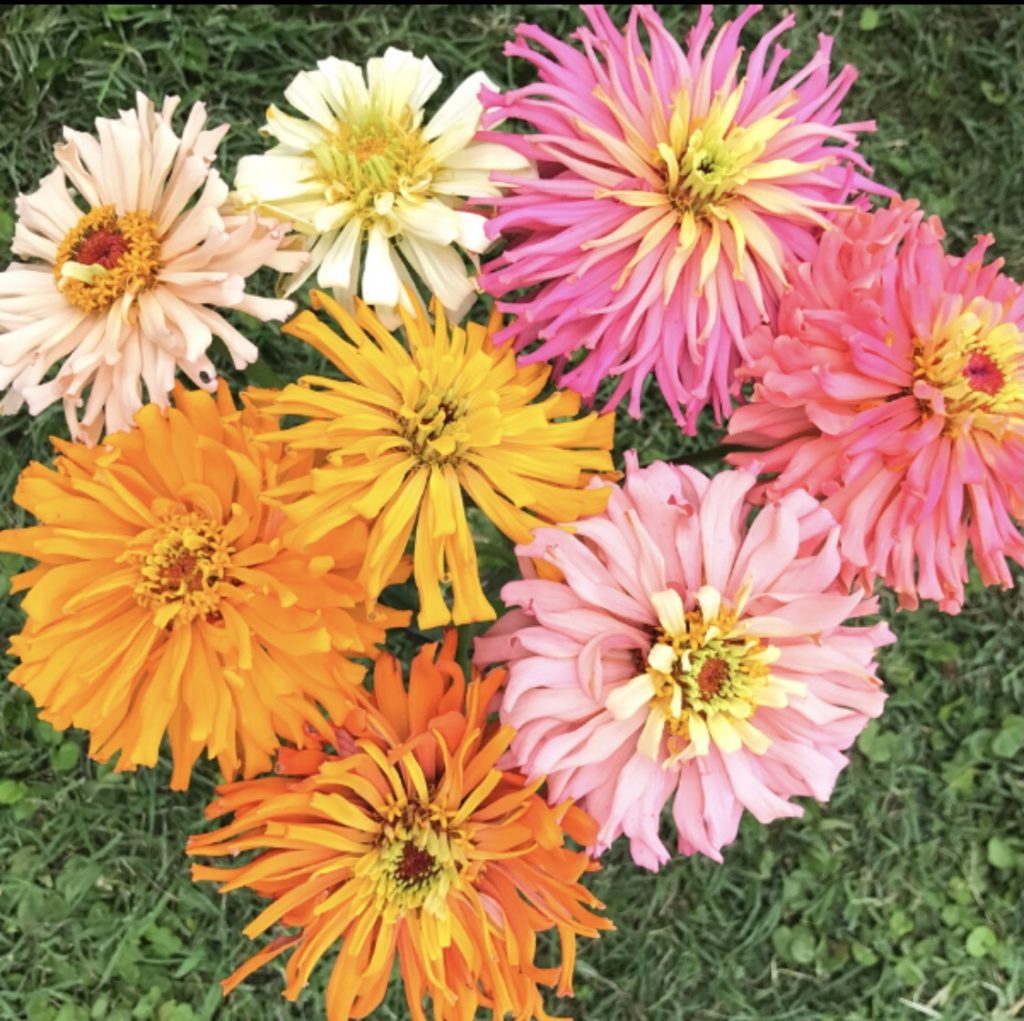
????????Giant Cactus Zinnias are large and frilly. The colors are unique and make them super useful in bouquet making plus the texture sets them apart.
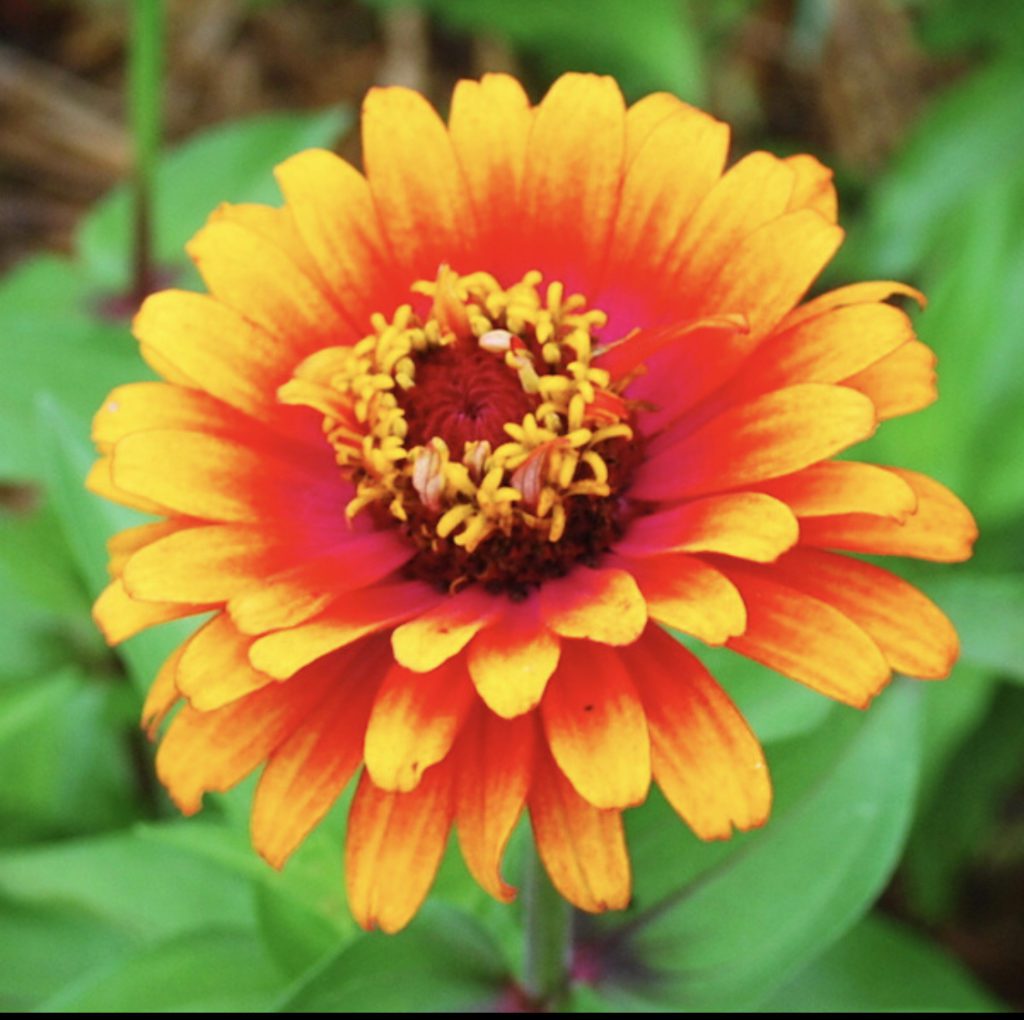
????????Zowie is what I call the sleeper zinnia. She is often overlooked until her colors are what you need. Not as tall as most, but so useful for bouquets and pollinators flock to them.
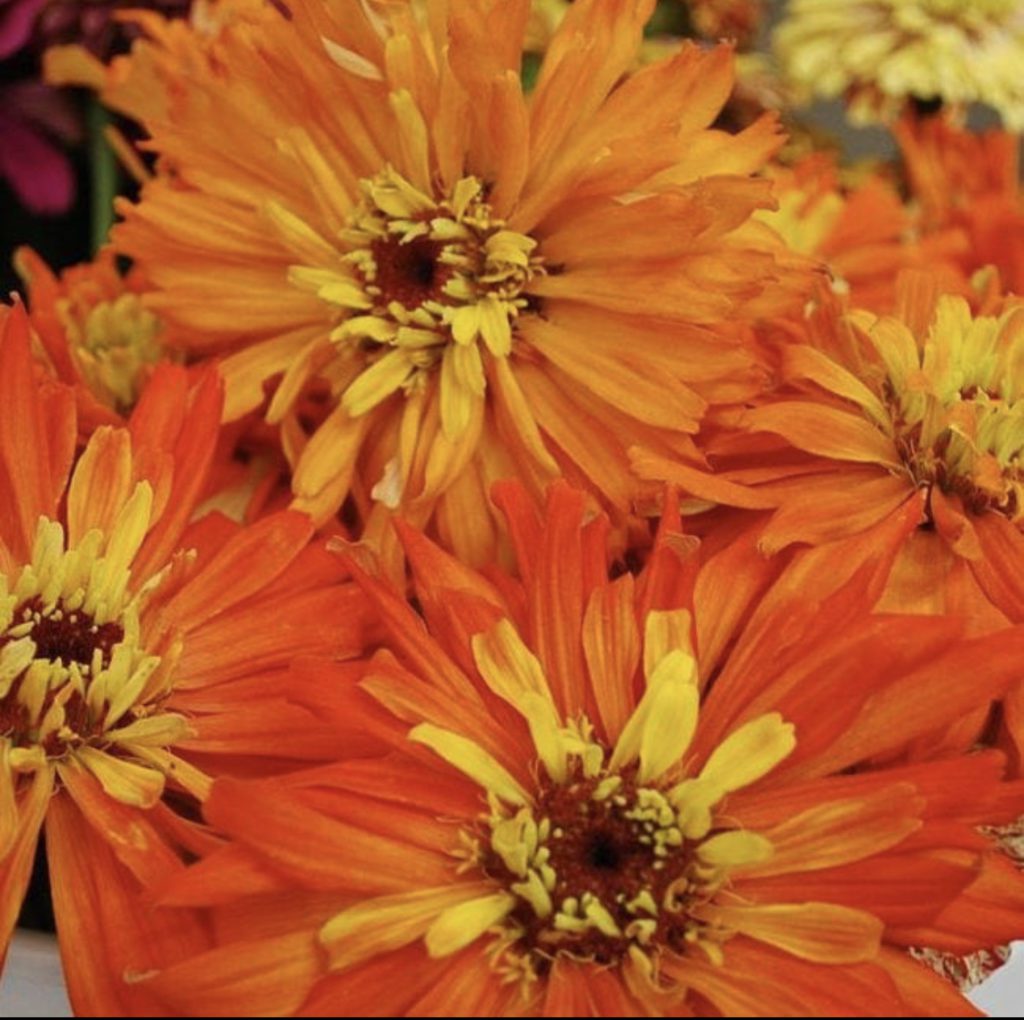
????????Inca Orange Cactus Zinnia are in our lineup because orange is one of my favorite colors. Pair these beauties with lime green and other oranges and BINGO— my personal fav!
????????Oklahoma Mini Zinnias aren’t pictured (couldn’t find one) but are often what are in my grandmas McCoy pitcher on my kitchen table. I love their smaller 1-1/2 bloom size that just seems to fit my vase perfectly.
This wraps up my week of honoring and sharing zinnias. Zinnia are a significant crop for my flower farm and hold a special place for me as they do for so many folks. This is what makes them dear to so many.
Listen to the episode of my Field & Garden Podcast, The Untold Gifts of a Cutting Garden sharing sweet stories of a cutting garden including zinnias.
We currently have all of the zinnia seeds I’ve mentioned in stock on my online garden shop. Get yours while supplies are available.
– Lisa Ziegler
 Founder of The Gardener’s Workshop and Flower Farming School Online and the publisher of Farmer-Florist School Online and Florist School Online. Award-winning Author of Vegetables Love Flowers and Cool Flowers. Watch Lisa’s Story ,find her blog and Podcast Field & Garden. Connect with Lisa on Facebook and Instagram!
Founder of The Gardener’s Workshop and Flower Farming School Online and the publisher of Farmer-Florist School Online and Florist School Online. Award-winning Author of Vegetables Love Flowers and Cool Flowers. Watch Lisa’s Story ,find her blog and Podcast Field & Garden. Connect with Lisa on Facebook and Instagram!

